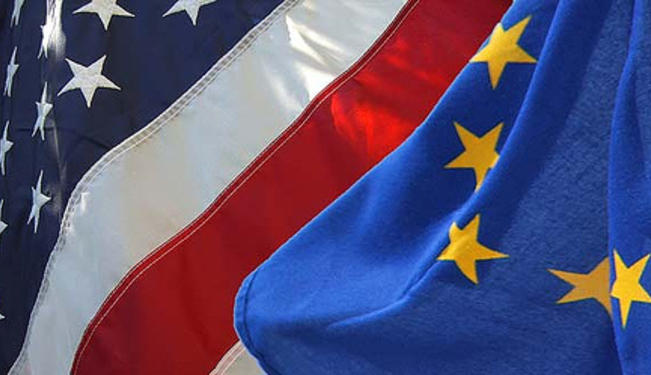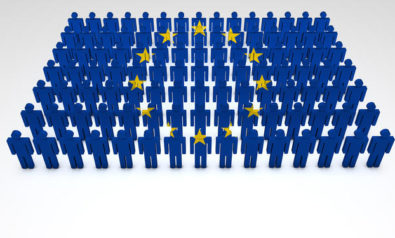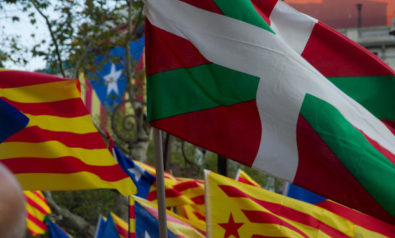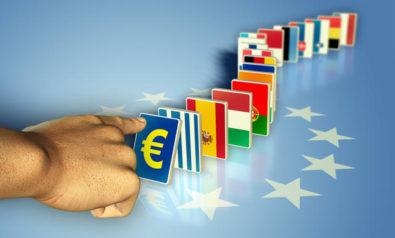A comparison between the similarities and differences between the EU and the USA and some thoughts on whether the EU should become the USE.
Europe is certainly at a crossroads. The current economic crisis challenges previous institutional arrangements and induces innovative Europe-wide responses in favour of more integration and less state sovereignty. For some, the process of building the EU begun in the mid-twentieth century has been too long and too slow and the Union’s decision-making mechanisms are still too inefficient. However, if we adopt a comparative historical perspective of the most similar experience of building a continental democratic federation in modern times – the United States of America – the EU can still make it and may soon reach a crucial, irreversible point.
Where does Europe end?
Before discussing new processes of institution-building and reform, we should be aware of a crucial decision for the EU to make, which is the establishment of clear external borders. Only when the territorial limits of the Union will be stable, will Europe be able to make its internal institutions work effectively, achieve sufficient economic and legal integration, and develop a consistent foreign policy beyond the problems of dealing with potential members and uncertain neighbours. In this regard, the European Union may be close to the tipping point that was passed by the US about one hundred years ago.
For the US, the process of annexing the bulk of its current territory – once the initial 13 colonies became independent states – took more than 60 years (approximately between 1787 and 1850). The territory of the initial core was finally increased about four-fold. The population in the original territories at the time of independence from Britain constituted about half of the later total population.
Similarly, for the EU, the process of enlargements from its initial six member-states, which formally began in 1957, has already lasted more than 50 years, while several large territories remain potential subjects for further inclusion. So far, the initial territory of the founding members (not counting their former colonies overseas) has increased three-fold. As in the US, the population of the six initial EU member-states currently constitutes about half of the total EU population.
As with the present day EU, the establishment of the American Union’s external borders was not predetermined by geography or destiny. Several additional territories could have been included, while some current members could have remained outside. Specifically, the limits in the north-east corner sought not only to include the basin of the St. Lawrence River, but sufficient land in Canada to allow access to Quebec and Montreal. In the north-west, negotiations led to the former Oregon ‘Country’ being split with the British, subsequently forming part of the Canadian province of British Columbia. In the west, half of California was in, while the other half was out, in Mexico. In the south, Puerto Rico was associated with the Union, while Cuba, though geographically closer, was not. Not to mention territorially disconnected Alaska and the Pacific archipelagos. Rather than being shaped by natural features, the territorial limits of the American Union were established for the Union’s capacity for assimilation and the consistent institutionalization of its components.
Likewise, the external borders and the internal membership of the territories forming the EU are not entirely predetermined by Christendom or geography. The initial core of the European community was located at the territorial centre of the continent, largely coinciding with the lands of Charlemagne’s medieval empire which later evolved into the Holy Roman and German Empire. After successive enlargements, the frontiers of the Union are now at the Atlantic Ocean in the west, the Mediterranean Sea in the south, and the Arctic Ocean in the north.
Nevertheless, in the south-east corner in particular, the limits of the EU are still undefined. While Croatia has definitely confirmed its membership, official and officially potential candidates to join the European Union now include all the remaining former members of Yugoslavia, that is, Bosnia-Herzegovina, Macedonia, Montenegro, Serbia, and the international protectorate of Kosovo, as well as enclosed Albania. All these countries already belong to the Stabilization and Association Agreement which gives them access to EU markets and financial support. They are now completely encircled by EU territory. The total population of these seven countries is only 5% of the total population of the EU, which may make them adaptable to EU rules and processes at not insurmountable costs. Some of the current candidates’ access to full membership to the EU may depend on pending democratization and institutionalization. A failure to integrate these countries might imply the persistence of conflicts and violence and make the area a kind of temporary ‘Wild East’ of the Union. If the Balkans remained outside, they would risk becoming the Caribbean of Europe, with comparable features of internal instability, mass emigration and recurrent hostility to the EU.
More controversial is Turkey’s candidacy. This remnant of the Ottoman Empire, a very large, underdeveloped, mostly Muslim and strongly nationalist country, is also subject to scrutiny regarding its civil rights and democratic credentials. Also, although the whole of Cyprus officially belongs to the EU, about one-third of the territory in the north of the island is a Turkish enclave beyond EU control. The exclusion of Turkey from the EU might evoke the exclusion of Mexico from the American Union, including its subsequent effects of isolationism and resentment. However, given the current situation, it seems unavoidable.
Abandoning sovereignty
The EU’s assimilation of new territories and states requires increasing efforts, as they are located at increasing distances from the initial centre and have significantly different populations in economic and ethnic terms. As occurred in America during the 19th century, territorial expansion was able to assimilate new, relatively close units at the beginning, but it had to adopt more flexible formulas of linkage and association with less cohesive territories in the more distant peripheries.
Nevertheless, building a stable, federal EU implies abandoning the concept of sovereignty that was forged around the Treaty of Westphalia in the 17th century and which has been gradually eroded as the process of Europe-wide integration has moved ahead. This was certainly anticipated by the founding fathers of the European community as the assertion of states’ sovereignty led to increasingly frequent and lethal inter-state wars. One of them, Jean Monnet, forecast during World War II:
‘There will be no peace in Europe if the states rebuild themselves on the basis of national sovereignty, with its implications of prestige politics and economic protection (…). The countries of Europe are not strong enough individually to be able to guarantee prosperity and social development for their peoples. The states of Europe must therefore form a federation or a European entity that would make them into a common economic unit.’
The current economic challenges make this diagnosis and recipe more relevant than ever. However, as for the process of territorial delimitation mentioned above, building federal political institutions from previously existing ‘sovereign’ states may take a while. In America, since the official establishment of the US in the late 18th century and for more than one hundred years, the founding states of the Union kept their ‘sovereign’ rights, very different institutions existed across the territory (including direct rule from Washington) and the territorial limits of the union were undefined. Only after the inter-state, intra-American Civil War, did the US begin to be referred to in the singular–the United States ‘is’, rather than ‘are’. A US-wide intelligence agency and security organization, the Federal Bureau of Investigation, only came into being in 1908, while the central bank known as the Federal Reserve, for conducting a common monetary policy, was established five years later in response to a series of financial crises. The union only managed to organize the whole territory into states with elected legislatures and governors as late as the early 20th century. As for the federal institutions, the number of seats in the House of Representatives was only established in 1911 and the federal Senate began to be elected with homogeneous rules in all the states just two years later.
In comparison, the EU1 has made very significant advancements during the last few decades. These have included the Schengen agreements on border control, police and judicial cooperation, which were incorporated into EU law in 1997, as well as the creation of the euro and a common monetary policy by the central bank, a process begun in 2002, although not yet including all countries. Democratization and the rule of law have been the European Union’s prerequisites for any potential candidate. In spite of all current anxiousness, the recent enforcement of the Treaty of Lisbon on the EU institutions could be a basic platform for shaping a well-defined balance between the two-chamber Council of Ministers and Parliament and a dual executive around the Commission and the innovative Presidency of the European Council.
In contrast to the US, the EU is still characterized by high economic inequality and varying degrees of attachment to certain institutions and policies among its members. However, the links across Europe are already sufficiently strong to make any hypothetical backlash extremely costly. If in response to the current crisis some member-states abandoned the euro or even the Union, if protectionist policies were adopted and inter-state rivalries were to re-emerge, the consequences for all Europe would probably be close to catastrophic. The union of Europe, as the union of America more than a century ago, has always advanced in response to crises and challenges. New Europe-wide financial regulations and common state budget and tax policies are now being approved. The outline of a potentially more democratic and efficient federal European Union is basically designed and positively tested. The current emergency demands nothing short of further continental integration.
The views expressed in this article are the author's own and do not necessarily reflect Fair Observer’s editorial policy.
Support Fair Observer
We rely on your support for our independence, diversity and quality.
For more than 10 years, Fair Observer has been free, fair and independent. No billionaire owns us, no advertisers control us. We are a reader-supported nonprofit. Unlike many other publications, we keep our content free for readers regardless of where they live or whether they can afford to pay. We have no paywalls and no ads.
In the post-truth era of fake news, echo chambers and filter bubbles, we publish a plurality of perspectives from around the world. Anyone can publish with us, but everyone goes through a rigorous editorial process. So, you get fact-checked, well-reasoned content instead of noise.
We publish 2,500+ voices from 90+ countries. We also conduct education and training programs
on subjects ranging from digital media and journalism to writing and critical thinking. This
doesn’t come cheap. Servers, editors, trainers and web developers cost
money.
Please consider supporting us on a regular basis as a recurring donor or a
sustaining member.
Will you support FO’s journalism?
We rely on your support for our independence, diversity and quality.













Comment